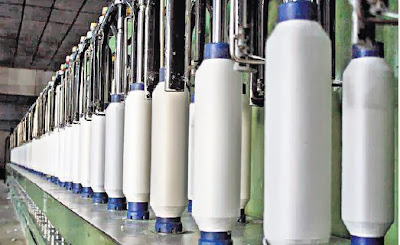Cotton
Arrivals: Sindh Leads The Path Of Victory!
Pakistan
Cotton Ginners Association (PCGA)
recently released figures of cotton arrivals up to October 01, 2013. In today's
Karachi Stock Exchange Analysis we
present an analysis of recent cotton arrivals trend along with our outlook on
the same.
Cotton
Arrivals Up By 7%YoY In FY14TD
Despite heavy rainfall in upper Sindh and lower Punjab, cotton
arrival figures portray a positive picture during the current season. Cotton arrivals, according to the
data released by PCGA,
during the said
period grew by
7%YoY to 3,684k bales
as compared to
3,447k bales during the
same period last
year. During the said period, Sindh contributed
59% (2.2mn bales)
in total cotton arrivals so far, while
Punjab contributed 41% (1.95mn
bales) during the aforementioned period.
On fortnightly basis, cotton arrivals declined by a massive 38%YoY to 1.1mn
bales as compared to 1.72mn bales during the corresponding period last year.
Province-wise analysis
shows a massive
change as far
as cotton arrivals
are concerned. Sindh,
remained the show
stopper, as arrival
of cotton from
its leading producer district Sanghar
posted a colossal growth of 27%YoY to 1,083k bales as compared to 851k bales
during the same period last year, sharing 29% of total arrivals. Similarly, Hyderabad and Tharparker's cotton arrival also improved by 38%YoY
to 215k bales and 11%YoY to 274k bales, translating into13% participation in
country's total cotton arrival so far. In
the province of
Punjab, cotton arrivals
from its major
producing districts were still
subdued as its
districts Khanewal and
Vehari each accounted
for a 6.8% weight in total cotton
arrivals posting a massive decline of 27%YoY to 251k bales and 26%YoY to 252mn
bales. Following the same declining trend, cotton arrivals from Sahiwal, Bahawalnagar and Bhawalpur were also on the declining path.
Local
Cotton Prices Increase By 39%YoY
Expectation of low cotton
production coupled with
increasing demand of cotton on local
front are the major concerns fuelling up
cotton prices by 39%YoY to
Rs7,250/37.325kg on October 01,
2013 as compared
to same day
last year. However during the
ongoing season (from 01, Sep 2013 to date) the average prices remained
at Rs6,886/maund as
compared to Rs5,523/maund
in the same period last year.
However, during the said period cotton prices on the international front increased only by 16%YoY to 92.95 cents/bbl due
to higher backlog of cotton stock.
Outlook:
Rising Demand Pulls Cotton Prices Higher
During the Current
Season which is
expected to end
by May-14 we
expect cotton production to remain at 12.2mn bales against the revised
government target of 11.95bales for FY14. Moreover, on the price front we
expect cotton prices to touch
Rs8,000/maund mark during
the year as Cotton
Yarn and Cotton Cloth demand
from China is expected
to remain on
the higher side which is likely to keep cotton demand
high.








